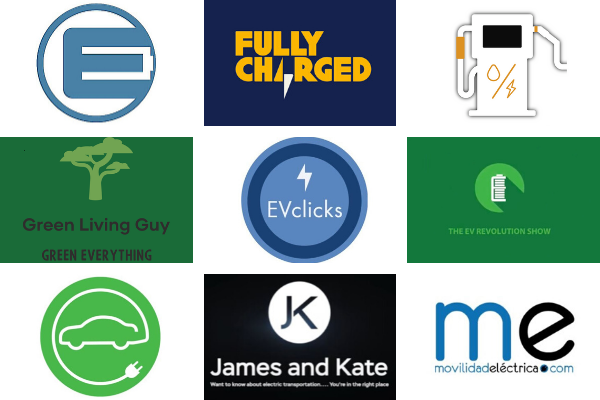Buckle up, folks, as we power up for a riveting journey into the next electrifying decade of EV innovation. As electric vehicles rev their way into mainstream acclaim, enticing us with their silent propulsion and an uncanny zero-emission promise, they’ve got us all speculating: what’s next? Will they fly, will they drive themselves, will they replace gas-guzzlers? So, hold onto your charging cables and prepare your outlets, as we map out future milestones in the EV world – the road ahead is juiced up with radical changes, fascinating opportunities, and a potential motoring revolution.
The Current Landscape of Electric Vehicles

The electric vehicle landscape is no longer a barren terrain. Today, cruisers steer through a panorama brimming with an impressive range of vehicles, from budget-friendly runabouts to ludicrously fast luxury sedans. Where buyers once encountered a scattered handful of plug-in options, they now face a rich smorgasbord of choice—all shiny, torque-thrilled, quiet, and guiltlessly green.
Automakers seem to be engaged in a game of high-voltage one-upmanship, each trying to outdo the others with extra volt jolts, longer ranges, a faster 0-60 miles per hour (mph), or a more spectacular array of tech treats. Tesla, the poster child for EVs, continues to illogically defy gravity with their battery power – while luxury carmakers like BMW, Audi, Porsche, and Mercedes are all speeding to catch up and compete in this electrified drag race.
Gone are the early days of limited ranges and long charging hours seen in first-generation EVs like the Nissan Leaf and Mitsubishi i-MiEV. Today, ‘range anxiety’ is retreating faster than a gas-guzzler’s fuel gauge, with modern EVs offering comfortably over 200 miles on a single charge – some even cross the 300-mile border.
However, the scene isn’t only sparkling with high-end, look-at-me EVs. At the other end of the spectrum, an increasing number of reasonably priced, everyday electric cars are leveraging the appeal of low running costs, and zero tailpipe emissions, to lure traditional gas guzzlers towards a quieter, cleaner commute. EVs are trending towards being not just an eccentric choice, but a realistically economical one.
Charging infrastructure, once a great stumbling block for prospective EV drivers, has sprouted across cities and along highways worldwide. High-speed charging networks such as Tesla’s Supercharger node now provide coast-to-coast travel possibility—although cross-country in an EV is still more of a leisurely jaunt than a Cannonball-record attempt.
As bullish as the current terrain might seem, it’s only a tarmac teaser of what’s in the production pipeline. The automotive industry has poured billions into R&D and factories, priming the market for further influx of EVs across the segments, from compact city cars to head-turning high-performance sports cars—and quite possibly, everything in between.
One thing is for certain, the electric vehicle revolution is not a phantom mirage; it is an onrushing reality. If there’s anything to be wary of, it’s not range anxiety, but the sheer excitement of the surging surge in EV options. Be prepared, the electrified future shows no sign of slowing down—instead, it’s charging ahead full beam. Buckle up!
Innovations Predicted for the Next Decade

Fasten your seatbelts, folks, because the next decade of electric vehicle (EV) innovation is going to be nothing short of astronomical. The technological strides made in the past few years are barely the tip of the proverbial iceberg; what lies beneath the surface, yet to be unveiled, is a game-changer.
Battery technology will surge ahead at warp speed. Today’s EVs already have impressive ranges, blowing the gasoline-guzzling, carbon-spewing relics of yesteryears out of the water. But the best is yet to come. Electrifying breakthroughs like solid-state batteries, boasting higher energy density and faster charge times, threaten to make ‘range anxiety’ a mere footnote in automotive history. Renewable charging, be it through solar-integrated panels or wind energy, may just mean the end of our dependency on the grid.
Speaking of grid, vehicle-to-grid technology (V2G) is another enticing prospect that’s already knocking on the door. By turning EVs into mobile, decentralized power stations, we could be looking at not just more efficient power management, but also a potential way to offset the cost of these vehicles. Your idle EV, instead of hogging a parking space, could be feeding the grid during peak hours and earning you a handsome return. Now, isn’t that a pleasing thought?
Automation will also take a giant leap forward. While we’ve already set foot on the moon with Level 2 autonomy, the journey to Mars, aka full self-driving capability or Level 5 autonomy, is going to be the buzzword of the decade. Improved AI, smarter sensors, robust regulatory frameworks – all these and more spell an era where human drivers become optional and urban mobility is revolutionized.
Let’s not forget the arrival of ultra-fast EV charging, a halo on the horizon. Imagine plugging in your car at a “filling station”, grabbing a quick steaming cup of joe, and by the time you’ve downed the last sip, your car’s charged, and ready to zap down the road again. It’s not science fiction anymore, it’s right around the corner.
We’re also going to see an electrifying wave in the form of new vehicle designs. With electric propulsion offering more layout flexibility, designers will experiment with exotic, revolutionary shapes to optimize aerodynamics, increase interior space and enhance user experience.
The future is undeniably electric and the next decade of EV innovation promises to redefine mobility in ways we have only dreamed. Hold on tight, because it’s going to be a high-octane ride to a greener, smarter, and cooler tomorrow.
Impact of EV Innovation on Mobility

Electric vehicle (EV) innovation is not a mere luxury; it’s a catalyst for overall mobility transformations, with underpinning ripple effects on society, the environment, and the economy at large. It essentially is the key that is slated to unlock a green, convenient, and cost-effective transportation future.
One of the profound effects of EV innovation on mobility is the paradigm shift from owning vehicles to sharing them. The dynamics of EVs—ease of use, low maintenance needs, and the potential for integration with digital platforms—make them attractive options for shared mobility services. Hence the coming decade could witness a surge in electric-car sharing platforms, reducing the number of vehicles on the road, alleviating congestion, and promoting resource efficiency.
Simultaneously, the emergence of autonomous EVs is poised to redefine our concept of personal mobility. EVs possess a competitive edge for automation owing to their simpler powertrain and due to the overlap in central controlling systems for propulsion and driving functions. In other words, they are primed for the autonomous era, offering the potential to increase vehicle utilization rates, enable more streamlined traffic flow, and enhance passenger safety.
Beyond that, let’s consider how EV innovation plays into public transportation. Buses, metro, and trams are some of the biggest contributors to carbon emissions due to their size and constant operation. The electrification of these transportation modes, paired with smart real-time routing algorithms, could realize not only significant environmental benefits but also a more flexible and efficient service that can adapt to the ever-changing pulse of the city.
In essence, EV innovation can transform our cities into cleaner, quieter, and more livable spaces. With clean energy and wireless charging technologies evolving in parallel, one can imagine a confluence of these innovations down the line, enabling electric vehicles to integrate seamlessly into urban landscapes.
Addressing last-mile transportation—those short but often inconvenient distances between transportation hubs and final destinations—also becomes a realistic possibility with EV innovation. Electric scooters, bicycles, and other compact, personal electric vehicles could bridge these last-mile gaps, creating a fully electrified, end-to-end journey for commuters.
In a nutshell, as the EV roller coaster speeds up over the next decade, the promise is not merely a switchover from gasoline to electricity—it’s a sea change in how we perceive and experience mobility. New vehicle forms, usage patterns, and transportation schemes are likely to emerge, bringing us towards a more sustainable, efficient, and user-centric mobility future.
Sustainable Approaches in EV Technology

Electric vehicles (EVs) have always had sustainability at their core. They represent a shift away from fossil fuels and towards cleaner, more efficient power. As we navigate the new decade, even greener initiatives are expected to shape the evolution of EV technology.
One sustainable approach that’s exciting for its potential is the shift towards using renewable resources for battery production. Lithium-ion batteries, the uncontested rulers of the present EV scene, have a dirty secret: their production is quite energy-intensive and often involves mining practices with significant environmental footprints. However, new promising materials like solid-state and sodium-ion batteries are on the horizon. These alternatives promise not only to be more efficient and safe but also to utilize abundant or more eco-friendly materials, reducing the environmental impact of battery production.
Vehicle-to-grid (V2G) technology is another promising development. This innovative concept sees electric vehicles as mobile energy storage, capable of supplying power back to the grid when not in use. Imagine, you could plug in your car at night and not only charge it but enable it to supply excess electricity back to the grid at peak times. This practice can help to balance the grid, especially when coupled with renewable energy generation, and even potentially earn the car owner some money.
Then there is the potential uptake of autonomous electric vehicles, which could dramatically cut back on emissions even further. Automated driving systems are far more efficient at managing energy because they can, in theory, create optimal driving conditions and routes, reducing energy consumption and battery life.
Taking a more holistic view at sustainability, we can also consider systemic changes to the way vehicles are manufactured, used, and disposed of. This might involve improvements in supply chain transparency, promoting shared ownership or rental models to reduce the number of unnecessary vehicles on the roads, improved recycling programs for EV components, and designing vehicles to be as durable and serviceable as possible to increase their lifespans.
Additionally, using artificial intelligence (AI) to optimize EV operations is an area of interest. By smartly managing EV energy consumption, AI systems can minimize wasteful habits and prolong the vehicle’s range and battery lifespan.
The world’s shift towards EV technology is both a response to, and a way to facilitate, the urgent need for more sustainable living. These remarkable approaches in EV technology carry an inherent promise of advancing this cause. They stand testament that the auto industry doesn’t just move people physically, but also propels us towards a cleaner future.
Challenges and Opportunities in EV Evolution

Transitioning from internal combustion engine (ICE) vehicles to electric vehicles (EVs), is like swapping a carnivorous diet for a vegan one—it’s healthier in the long run, but requires quite an adjustment. With this great evolution, comes significant challenges and significant opportunities in equal measure.
Major challenges like range anxiety, charging infrastructure, lengthy charging times, and high upfront costs present obstacles for many potential EV adopters. Most EVs can’t claim the highway-cruising range of conventional cars and this scares a road-trip-loving public. Overcoming this hurdle, however, opens up opportunities for innovations in battery technology, namely, in developing cheaper and denser batteries with longer lifespans than those currently available.
Moreover, the charging infrastructure in most places is still in its infancy. Unlike gas stations, which are prolific and speedy, EV charging facilities are comparatively fewer and slower. However, on the bright side, this shortage poses an opportunity for infrastructure growth and the creation of more efficient charging methods. The development of wireless, solar, and super-fast charging presents tantalizing opportunities for businesses and researchers alike.
Also, let’s not ignore that EVs are currently expensive, and much of that cost is attributed to battery manufacturing. This presents a pretty clear-cut challenge: how to drive down the costs. If this issue can be addressed, we open the door wider to mass-market acceptance.
Finally, speaking about opportunities, EVs present an opening for overhauling the very concept of vehicle ownership. With EV architectures more adaptable to autonomous driving, the eventual shift towards shared vehicle services rather than individual ownership becomes increasingly probable.
Additionally, EVs also present unique possibilities for grid integration, with vehicle-to-grid (V2G) technologies potentially turning parked EVs into massive, distributed energy-storage systems, easing the load on the grid during peak times.
In summary, the evolution of EVs poses numerous challenges but also glorious opportunities. How we play our cards determines whether we cruise into a cleaner, greener future on shiny new EVs or sputter along in our fossil-fueled jalopies. This EV narrative is crucial for shaping the next decade’s transportation landscape, calling for our astute attention and collective action.
FAQs
When will everyone be driving an EV?
What kind of innovations can we expect?
How will EV innovation impact the way we live?
Conclusion
As we enter a new era of automotive innovation, it’s clear electric vehicles (EVs) are set to upend tradition, blazing trails we’ve yet to envision. If we can take anything away from the last decade, it’s that the march of progress is relentless and inescapable. With continued advancements in battery technology, autonomous driving capabilities, and accessibility, the future of EVs promises to revolutionize not just our roads, but the very ethos of mobility. Buckle up for a decade of thrilling surprises in EV innovation. The road ahead is electrifying, and our journey is just beginning.
